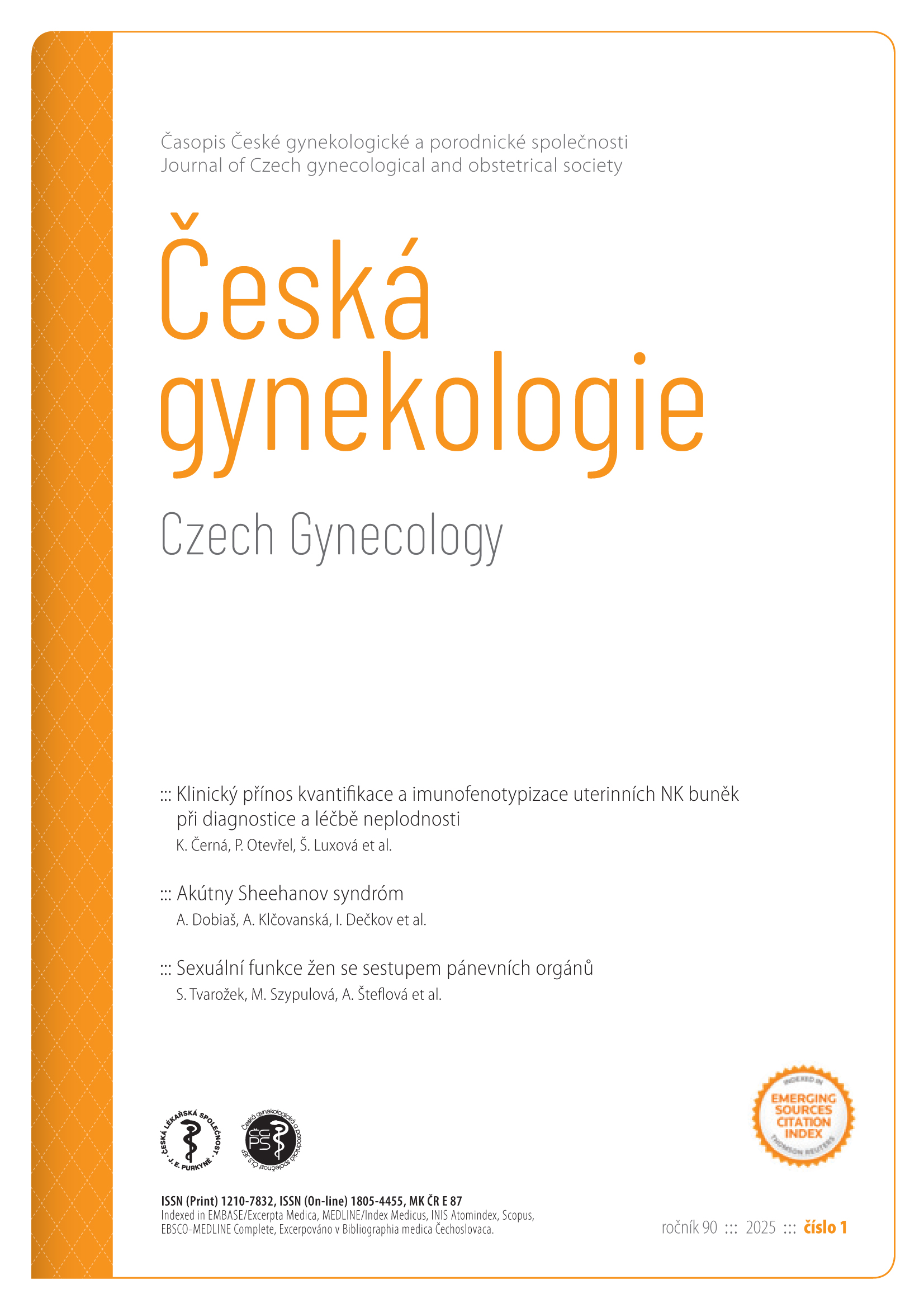Vascular endothelial growth factor D potential predictor and screening marker in ovarian carcinoma
Keywords:
gynaecologic oncology, ovarian carcinoma, lymphangiogenesis, VEGF-DAbstract
Introduction: Until now, it is still true that late detection of ovarian cancer is a major cause of its poor prognosis. So far, no sufficiently sensitive and specific marker or combination of markers and imaging methods has been identified that would unambiguously allow the detection of early potentially highly-curable stages and furthermore prebioptically differentiate a group of poorly distinguishable benign lesions from malignant tumours on ultrasound. In a retrospective study design, serum levels of vascular endothelial growth factor D (VEGF-D) were investigated. VEGF-D is related to tumour-induced angiogenesis, lymphangiogenesis, and vascular remodelling with the effect of facilitating metastasis and improved oxygen and nutrient distribution into tumour tissue. On the other hand, the lymphatic network serves as a barrier against tumour dissemination and is a transport system for immune-active elements in suppressing tumorigenesis. The aim of this study was to investigate that there is a difference in serum VEGF-D levels in a group of patients with malignant tumours, benign ovarian lesions, and healthy controls without pathological findings in the adnexa. Methods: 162 sera collected preoperatively and preserved by a freezing process in a biobank in 2022–2023 were retrospectively evaluated. The test set was stratified on the basis of histopathological results of the adnexal examination into the malignant tumour group (N = 54), benign lesion group (N = 47), and healthy control group (N = 61). Descriptive statistical analysis methods were used for the statistical evaluation of the parameters. Nonparametric tests were used to compare serum VEGF-D levels. All analyses were considered at a significance level of 5%. Serum VEGF-D was analysed by ELISA Quantikine® Human VEGF D R&D Systems and values were read spectrophotometrically on a TECAN reader. Results: The result of the comparison of descriptive statistical parameters was statistically significant (P = 0.00067) for the difference between serum VEGF-D levels in the set of benign lesions and malignant tumours. Furthermore, there was a statistically significant difference between the values of patients with malignant tumours and healthy controls (P = 0.0008). No statistically significant difference was found between the values of patients with benign lesions and healthy controls (P = 0.4308). Compared to the conventional marker CA125, pathologically elevated serum CA125 levels correlated with low serum VEGF-D levels in patients with malignant tumours. The same concordance was observed in comparison with the HE4 marker: high serum HE4 levels were accompanied by low VEGF-D levels in the group of patients with malignant tumours; moreover, the dot plot clearly stratified the group of patients with malignant tumours from the group of benign lesions and healthy controls. Conclusion: In view of the results obtained, the investigation of serum VEGF-D levels has the potential of a diagnostic test with a contribution to the stratification of the difficult of prebioptically differentiating adnexal tumours.


